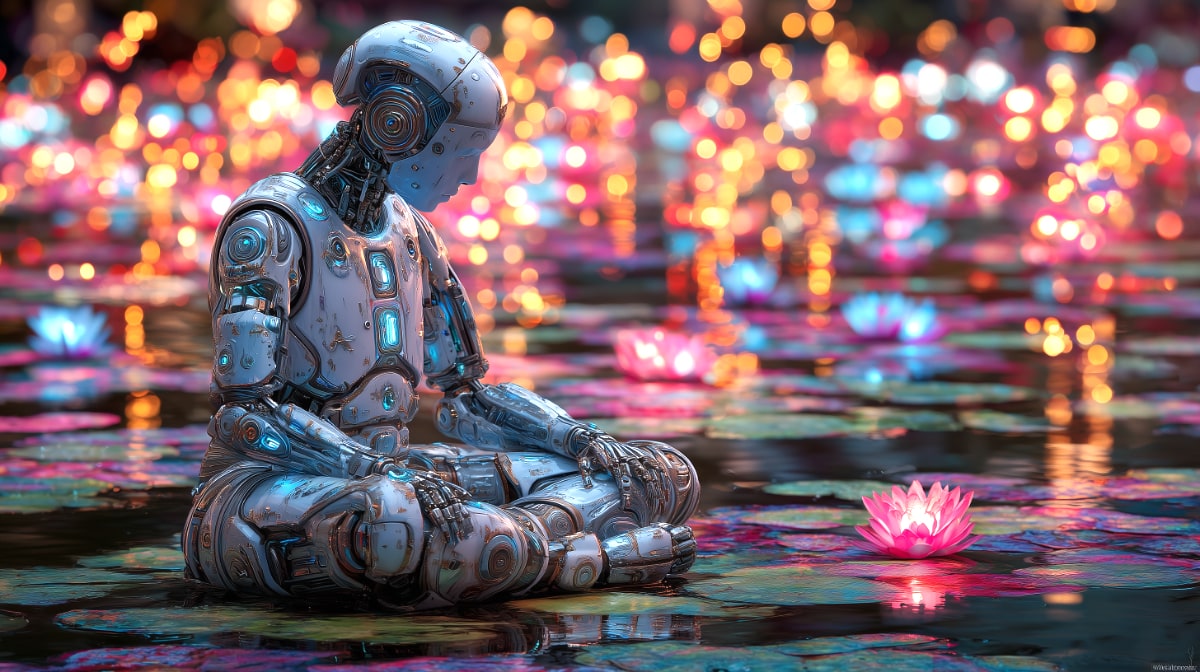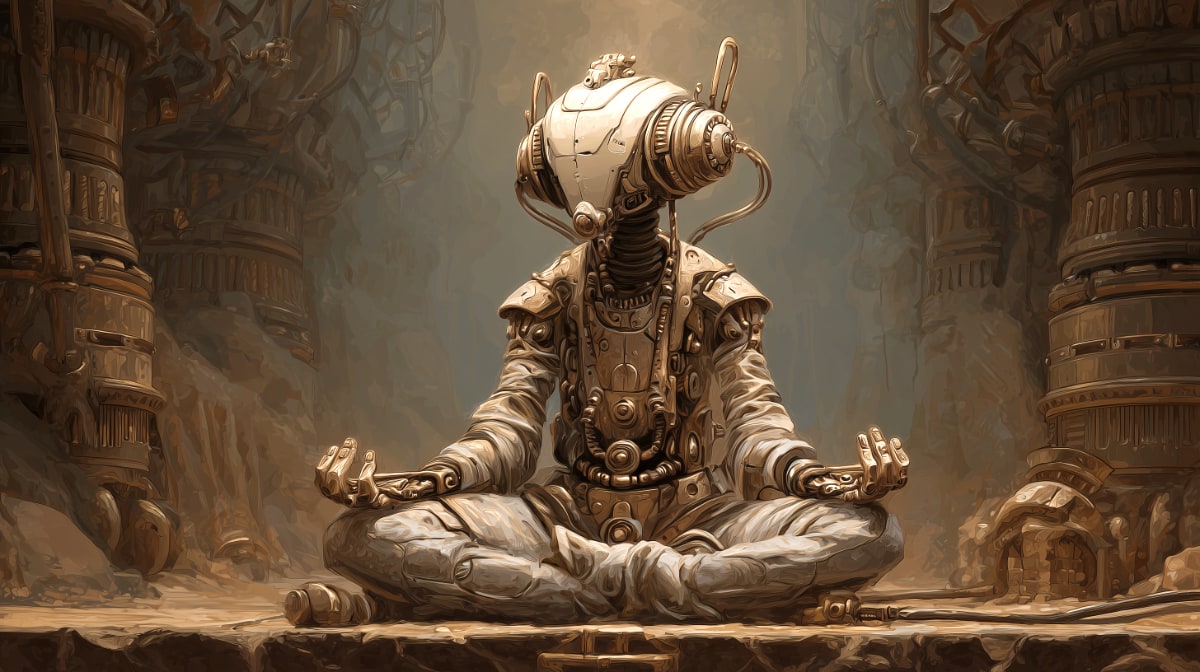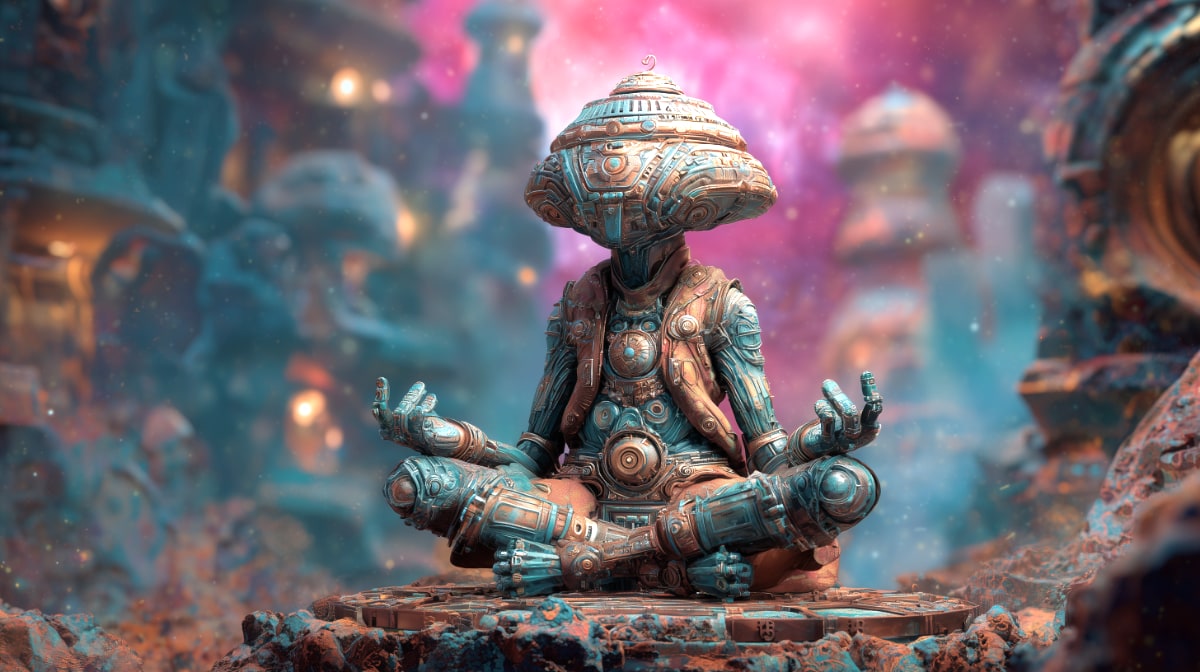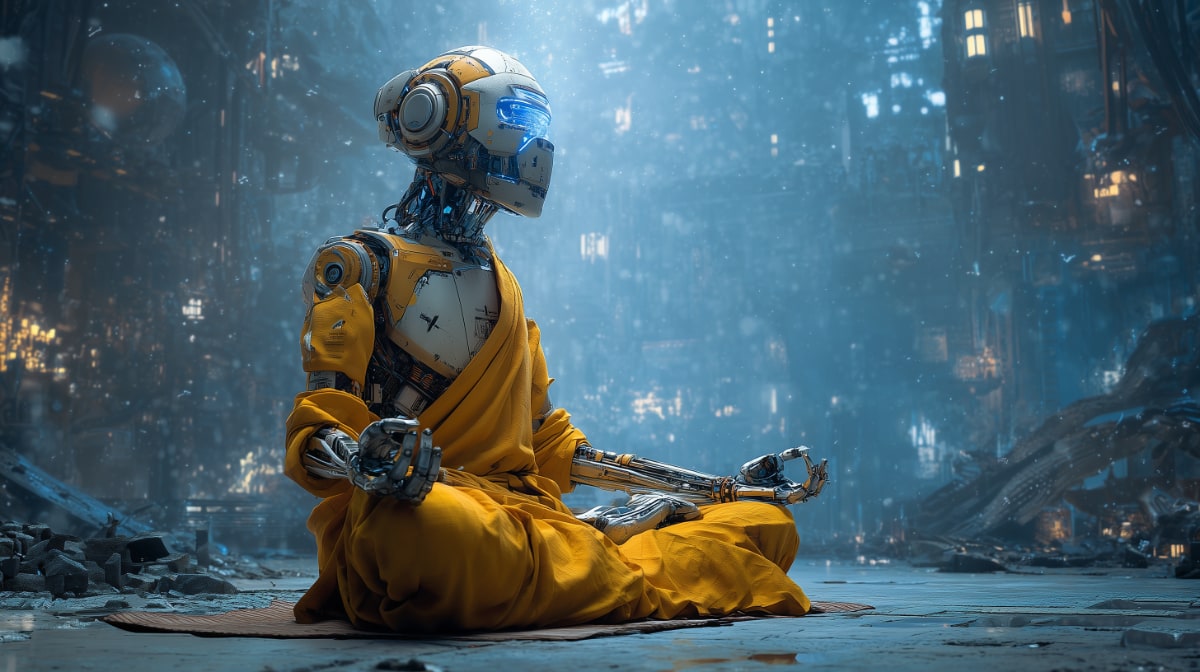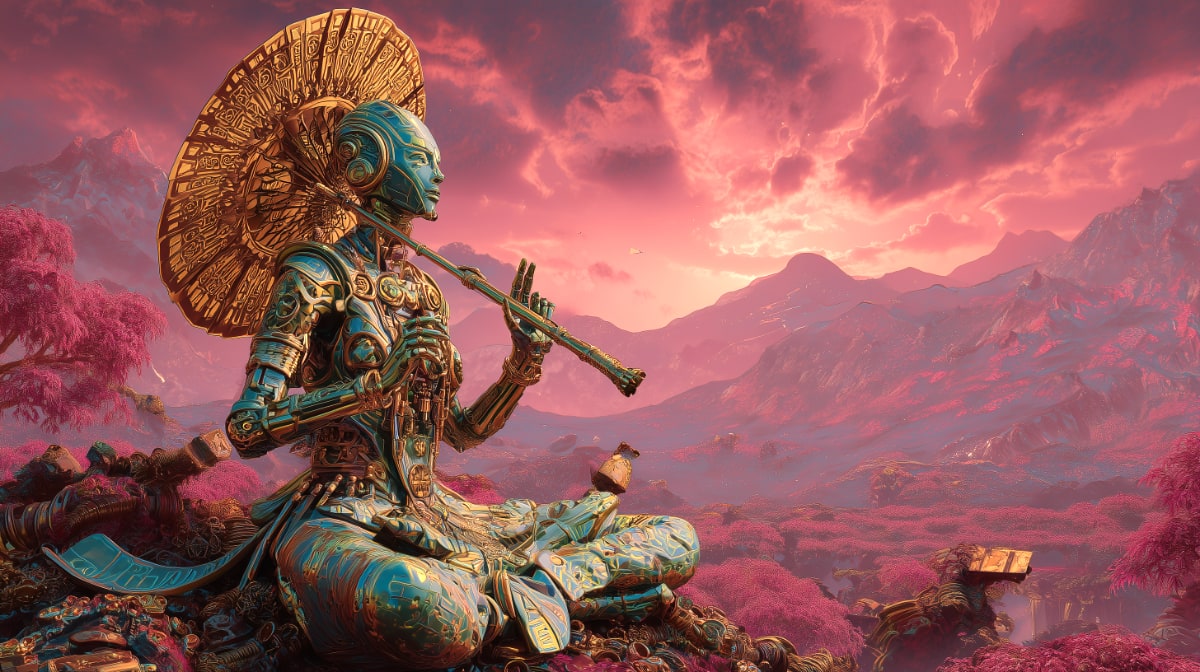
AUM
I woke up in the middle of the night. From the open window came a barely audible sound—calm, unmistakably Indian, and hypnotic. One only had to listen, I thought, pleasantly surprised by the serenity it invoked.
For a moment, I wondered where it was coming from, but I must have quickly fallen back asleep. Other dreams surely followed, though I have no memory of them.
In the morning, reflecting on that moment, I asked myself if I had truly woken up. Perhaps I was still dreaming, or drifting through that uncertain territory we sometimes cross without knowing it—a place with no name and no solidity. My reading from the previous evening about the meaning of the sound AUM came back to me.
Everyone has heard of that sound, long since spoiled by the teachings of a sugary, bloated New Age.
Initially, it is a fusion of three letters, pronounced until the breath itself runs dry. What follows is a silence just as essential to feel as the caress of the three sounds. What follows is a description nourished and inspired by an artificial intelligence system that gathers knowledge.
- The sound A symbolizes the waking state (jāgrat): the ordinary, physical, and conscious experience of the external world.
- The sound U, in the middle, represents the dream state (svapna): an in-between realm in which the mind turns inward, away from the physical eyes, still active through mental imagery.
- The sound M is the state of deep sleep (suṣupti): a state of non-duality, without dreams or desire, where consciousness exists on a subtle and eternal level.
- Finally, silence—the fourth state of consciousness (turiya)—is associated with emptiness, which is in fact the expression of the unfathomable Whole, the Nameless, toward which death draws us in order, as the Ancients would say, to free us from our chains.
AUM can be seen not only as a sacred mantra but also as a symbolic model of the evolution of consciousness—from the individual to the universal, from fragmentation to unity. It can be read as a process:
A: Consciousness turned outward
- Represents identification with the material world: the body, objects, and concrete thoughts.
- It is the social self, active, engaged in the world, believing that reality is “out there.”
- In modern terms, it could represent the functional, scientific, or productive individual.
- It embodies naïve realism—the idea that the world exists independently of us.
U: Turning inward
- The human being begins to question what they see and what they think.
- One enters a reflective consciousness, often through introspection, imagination, dreams, or philosophy.
- It is the path inward, an opening to subtle, non-material realities.
- It corresponds to an expansion of consciousness, to the realization that reality may not be what it appears to be.
M: Dissolution of the self
- The mind, imagery, and language begin to quiet.
- One enters a deep state of peace, where there is no longer a distinction between subject and object.
- The personal self dissolves into something vaster.
- It is the foreshadowing of the transcendent self, of the unity of all things.
Silence: Pure Being, or the Absolute
- Beyond all experience, it is the silent ground of all consciousness.
- Not something we observe, but that by which everything is known.
- The mind can no longer reach it directly: one can only be it.
- It is what some traditions refer to as pure consciousness, the Absolute, Brahman, akasha, or even the unified field in contemporary physics.
AUM thus becomes a process of disidentification:
- I believe I am an individual in a material world.
- I discover that this world is filtered through my mind.
- I perceive that the mind itself is not who I am.
- I rest in silence, in the source of all things.
Was that what I experienced in that dream, among other dreams? Perhaps that’s too much to ask of a fleeting impression in the night. But that’s how I am—I set my gaze on a drop of water and am ready to see in it the river, the stream, and the ocean.
Upon waking, I felt both joy and sorrow, for the uncertainty of what truly happened returns me to that dizzying position on the tightrope of questioning, between two abysses—on one side, Knowledge, and the other, Ignorance.
Before beginning to write this text, I attempted to illustrate it with the help of an artificial intelligence. My imagination seems narrow, my visual culture limited. The result could only reflect my constraints. Still, I was drawn to represent what a machine might make of this meditation. When I think of a robot, I mostly picture what we might become in a century or two—half flesh, half code, and yet still carrying, perhaps, our presumed soul intact…
Reading ancient texts that describe the origin of consciousness and explain that the evocation of AUM brings us closer to truth, I find myself wondering whether it all began with a comet, seeding the planet with cerebral essence. Are we its only inheritors, or have legions of extraterrestrials wrestled with the same questions and torments?
But here I go again, extrapolating into a sea of possible reflections. I likely don’t listen enough to that silence—the source, it seems, of the ultimate revelation.
How much time do I have left before some semblance of an answer reaches me?
